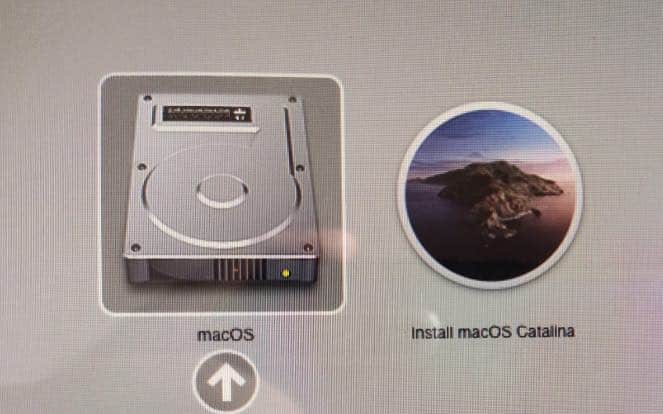
- Create bootable usb mac catalina from windows how to#
- Create bootable usb mac catalina from windows mac os#
- Create bootable usb mac catalina from windows password#
- Create bootable usb mac catalina from windows download#
It will redirect you to the Apple website. 
Create bootable usb mac catalina from windows download#
Click on the macOS for which you want to download the installer file. Follow the below steps to get the macOS installer file of Big Sur, Catalina, Mojave, and High Sierra: To create bootable USB, you need to first download the macOS installer file. A downloaded installer file of the macOS version, for which you have to create the bootable USB installer for Mac. A USB thumb drive or any other external drive formatted as macOS Extended, with storage capacity of at least 14 GB. What’s Needed to Create Bootable USB for Mac?īefore you start, you need to keep the following things handy: Create bootable usb mac catalina from windows how to#
If you want to know how to create a bootable USB to install macOS Big Sur, Catalina, Mojave, and High Sierra, then this post is for you. You can use this bootable USB macOS installer to perform a clean install of macOS, install macOS from USB on a separate volume of your Mac drive, or in case your Mac encounters OS issues. You can now quit Terminal and eject the volume.If you plan to install macOS on multiple Mac systems and don’t want to download the installer multiple times, then you can create a bootable installer.
When Terminal says that it's done, the volume will have the same name as the installer you downloaded, such as Install macOS Catalina. Terminal shows the progress as the bootable installer is created. When prompted, type Y to confirm that you want to erase the volume, then press Return. Terminal doesn't show any characters as you type your password. Create bootable usb mac catalina from windows password#
When prompted, type your administrator password and press Return again. If it has a different name, replace MyVolume in these commands with the name of your volume. These assume that the installer is still in your Applications folder, and MyVolume is the name of the USB flash drive or other volume you're using. Type or paste one of the following commands in Terminal. Open Terminal, which is in the Utilities folder of your Applications folder. Create bootable usb mac catalina from windows mac os#
Make sure that it has at least 12GB of available storage and is formatted as Mac OS Extended. Connect the USB flash drive or other volume that you're using for the bootable installer.Use the 'createinstallmedia' command in Terminal You will create the bootable installer from this app, not from the disk image or.

It installs an app named Install OS X El Capitan into your Applications folder. On a Mac that is compatible with El Capitan, open the disk image and run the installer within, named InstallMacOSX.pkg. Quickly create a macOS bootable USB on WindowsĮl Capitan downloads as a disk image. Enter the create partition primary command and press Enter to complete the process.This convert master boot record to new GPT. Type the convert GPT command and press Enter.Enter the clean command and press Enter.

This command will select the disc partition of your choice.
Type the select disk command followed the number assigned for the USB flash drive (e.g., select disk 4), and press Enter. This command will show all of the partitions inside of a disc.  Enter the list disk command to view all drives connected to your computer and press Enter. This will display that is connected to your computer. Type the diskpart command and press Enter. Type cmd in run dialog or open it from the start menu. Open Command Prompt as an administrator. In this case, you want to redo the entire process again, but this time use the following steps to use the Diskpart command-line utility on Windows to create the appropriate GPT partition. If the USB flash drive is not working using TransMac, it could be still a partition problem.
Enter the list disk command to view all drives connected to your computer and press Enter. This will display that is connected to your computer. Type the diskpart command and press Enter. Type cmd in run dialog or open it from the start menu. Open Command Prompt as an administrator. In this case, you want to redo the entire process again, but this time use the following steps to use the Diskpart command-line utility on Windows to create the appropriate GPT partition. If the USB flash drive is not working using TransMac, it could be still a partition problem.








 0 kommentar(er)
0 kommentar(er)
